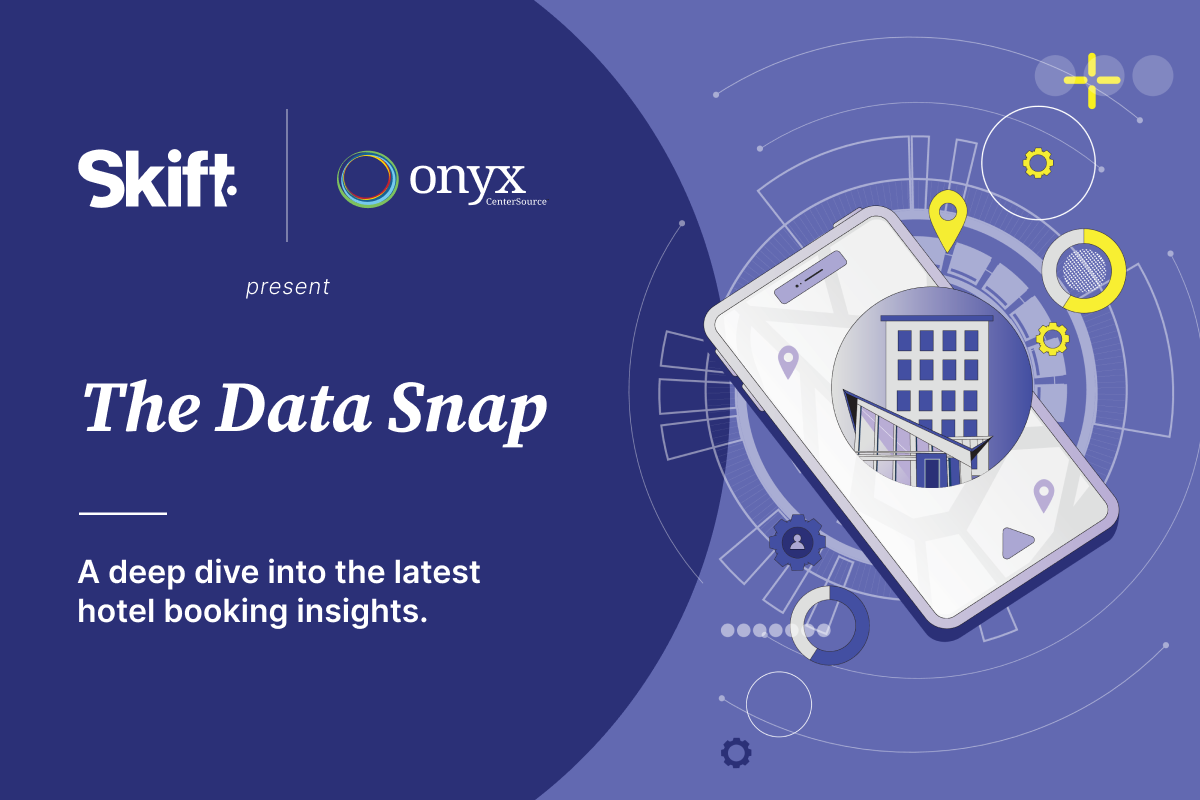Airlines Put Facebook Messenger Chatbots to Work Answering Easy Questions

Skift Take
Every day, 10,000 customers contact Aeromexico to ask questions, and many — such as "Is there a charge for checking a bag?" — are so simple they don't require a human response.
So about a year ago, Aeromexico started using a Facebook Messenger chatbot to answer these types of questions, loading an artificial intelligence "brain" with 500 common responses, chosen from Facebook, Twitter, and telephone transcripts. The platform serves about 1,000 Spanish-speaking customers per day, handling roughly as many inquiries as two full-time employees could but at a cheaper cost.
"It's able to interpret any of the ways that any human could ask questions and determine what they're trying to ask and match it with one of the answers," said Brian Gross, Aeromexico's vice president for digital innovation and strategy.
Like a lot of newish tech, it's not perfect. Gross stumped it recently by using an offensive Mexican phrase, and the bot told him it didn't understand. It's also not fully equipped to answer some common questions, including "How do I change my flight?"
It can respond, but it directs passengers to regular customer service channels. The answer is similar for bag fees, with the bot transferring customers to the airline's website rather than helping passengers pay what they owe. And while the bot can look up flights for sale, it will send travelers to the website to buy them.
Eventually, Gross expects the bot to improve, and perhaps help solve basic issues from start to finish. Several other airlines are also using or testing Facebook Messenger chatbots, including Volaris, a Mexican discounter, Lufthansa Group, and KLM. Some bots answer questions, while others allow passengers to buy tickets or receive flight status updates.
For now, most airlines are focused on Messenger, since implementing bots on Facebook is easier than on other services. But in the future, some airlines want to develop programs for Whatsapp and WeChat.
Bots have already improved markedly since early versions like Alaska Airlines' Ask Jenn, which debuted almost a decade ago. Over time, experts say bots should become even more human-like, and be better able to help customers buy tickets, pay for baggage and change their flights. They argue that bots should be able to do everything agents can.
"Yes, you can have the bot with some answers to some questions," said Inaki Uriz, CEO of Caravelo, the company that helped Volaris build its bot. "If people actually ask about those things, they get the answer. That's the approach that many airlines have followed until now. But we believe our chatbot has to be an airline assistant. It has to know you. It has to do everything you want."
CUSTOMERS ASK THE SAME QUESTIONS
In the short term, having bots respond to basic questions makes the most senses since about 80 percent of passengers ask the same things, Uriz said.
Often, passengers want to know about baggage fees and whether they can bring a bicycle. Or they want to know how early to arrive at the airport or what to expect from security checks. Sometimes they want to know about where the airline flies, and how they can change their flights.
"For that you can have a bot that can have straight precise and even rich answers," Uriz said.
At Aeromexico, the bot handles these queries without difficulty, Gross said.
"You have people coming in with simple questions and the brain is able to match it with an answer, and that's the answer," he said. "For example, for baggage allowance, you can have a human typing out all this stuff, or you could just show them, 'Here's what you can take.' I don't see the point of a human doing it."
Uriz said about 15 percent of requests are "unusual," making them difficult but not impossible to handle. "You cannot have a direct answer," he said. In these cases, the bot can do a "semantic search" on the airline's website, and usually share information that may help the customer. Sometimes, the bot picks up on answers in the frequently asked questions section of the site.
Only about 5 percent of questions are "real craziness," Uriz said. In those cases, his company's bot will hand over the question to a human. Some questions are legitimate — if convoluted — while others are not.
"We get a lot of cursing, vulgarity, and we get a lot of sexual innuendo," Aeromexico's Gross said. (He notes human agents receive the same abuse.)
Of course, bots still make mistakes — perhaps more than humans. But it's still early for the technology, and executives say it makes sense to be transparent about what bots can — and cannot — accomplish. They generally recommend airlines tell customers they're interacting with a bot, and not try to pretend it's an agent.
"We will be told that chatbots are here and flawless and they will change everything," Uriz said. "And of course they are not. At least not today. We need to manage expectations and say, 'In some cases, it is better than dealing with a human and in some cases, it is not.'"
Uriz, who also works with Thomas Cook Airlines, Condor, Finnair and Tigerair Australia, said he sometimes meets with airline executives who try to confuse the bot by asking convoluted questions. They often succeed, but he argues their attempts don't prove anything, since humans usually ask straight-forward questions when they need a simple answer.
"If you really have the need to know about baggage, you will phrase things in a normal way," he said. [You'll ask], How many kilos can I bring? With these plain English questions, there is no failure."
Impersonal touch
At KLM, bots work differently. The Dutch airline has a bot that allows passengers to opt into receive flight status information and their itinerary via Messenger. But the bot does not directly respond to customer service inquiries. That's done by humans — more or less.
"For KLM, the personal feel is something that makes our brand really strong," said Karlijn Vogel-Meijer, the airline's social media manager. "We don't have the money like Emirates or Qatar [Airways] has, but we have that personal feeling."
Still, it's not entirely a human-driven process. Instead, KLM uses artificial intelligence to make it easier for humans to respond to queries on Facebook and Twitter. It uses an algorithm from a company called Digital Genius trained on 60,000 questions and answers.
When a question comes in, the system makes a decision about which answer fits best. An agent can decide whether to use the response or expand on it. If the agent changes the response, the artificial intelligence program picks up on it.
"The system gets smarter," she said, and over time, it is able to produce better responses.
Without using artificial intelligence, it might take KLM too long to respond to customers, Vogel-Meijer said.
"About two years ago, we promised the customer a response within an hour and they were satisfied," she said. "Right now if they are waiting for 20 minutes, they say, 'I have been waiting for 20 minutes and my flight has been canceled and I need an answer.'"
KLM could fully automate the process someday, Vogel-Meijer said, but for now airline executives do not think the technology is sophisticated enough to handle true, two-way chats.
"We believe that people who turn to Messenger go there for a conversation," Vogel-Meijer said. "You had that time when you wanted to buy bread at a bakery because this person knew you. Now, you see that people want to go back to having those conversations, but they do it with the technology of today."
Lufthansa Group tried to give its bot some human-like qualities, naming her Mildred, and calling her a "friendly lady" with glasses and pink hair tied into a bun. She was designed to help customers search for cheap airfares, much like a travel agent would have years ago.
But at the SAP’s Sapphire Now conference earlier this month, Lufthansa's head of digital innovations, Torsten Wingenter, told the audience the bot as first designed had a flaw — it answered questions too quickly.
"People were irritated when Mildred was answering too fast because this was not natural so they did not expect such a fast answer," Wingenter said, according to iTnews, an Australian trade publication.
Because customers weren't accustomed to interacting with machines, Lufthansa Group had to delay the response time from the bot, Wingenter said. “It might be in the future that people get used to communicating with machines, but right now they’re not used it and so they expect the other side to be more human,” he said.
Still, Uriz said customers will adapt, and many may prefer interacting with machines. He notes customers can be more abrupt with questions, allowing them to save time. They don't even have to be nice to the machine.
"Maybe you don't need to be so polite," he said. "You can be more direct, and more quick. If I am talking to a bot, I don't need to say, 'Hi, or thank you.' I get the answer and that's it."





